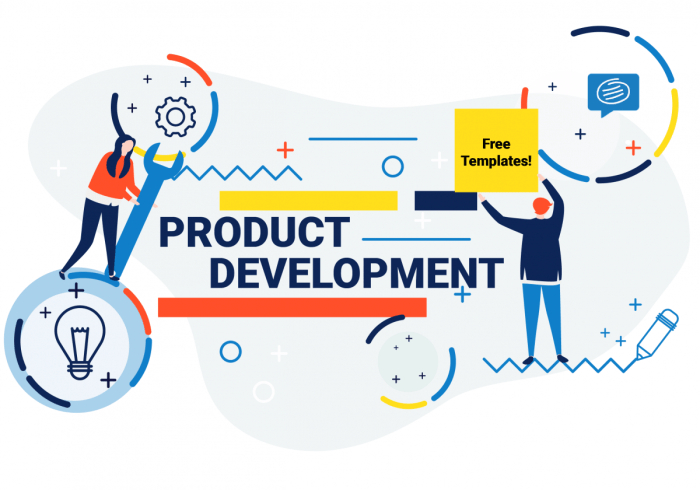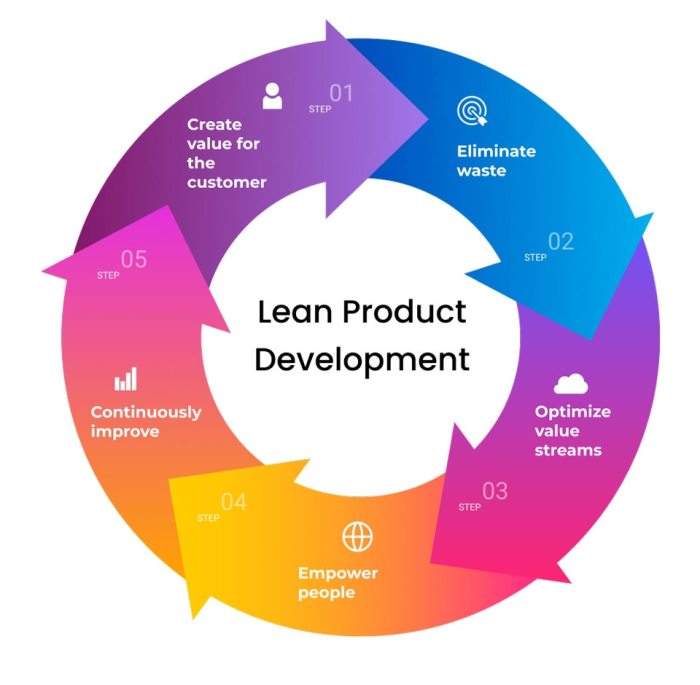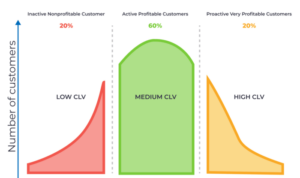Product development takes the spotlight as we dive into a world where creativity meets strategy, paving the way for groundbreaking innovations and market success. Get ready to explore the dynamic process of bringing ideas to life in the business realm.
From defining the concept to market research, prototyping, and collaboration, every stage is crucial in shaping the products we love and use every day. Let’s uncover the secrets behind successful product development strategies and the key elements that drive innovation forward.
Overview of Product Development

Product development in the context of business involves the creation, design, and launch of new products or improvements to existing ones to meet consumer needs and preferences. It is a crucial process for companies to stay competitive in the market and drive growth.
The Importance of Product Development
Product development is vital for companies as it allows them to innovate, differentiate themselves from competitors, and attract new customers. By continuously improving and introducing new products, businesses can adapt to changing market trends and consumer demands, leading to increased sales and profitability.
- Enhances competitiveness in the market
- Drives revenue growth through new product launches
- Builds brand loyalty and customer satisfaction
- Keeps companies relevant in a fast-paced marketplace
Stages of Product Development Process
The product development process typically consists of several stages, including idea generation, concept development, testing, and commercialization. Each stage plays a crucial role in ensuring the success of the product in the market.
- Idea Generation: Brainstorming and identifying opportunities for new products.
- Concept Development: Creating a detailed concept for the product based on market research and consumer feedback.
- Testing: Conducting product testing to ensure quality, functionality, and market fit.
- Commercialization: Launching the product in the market and implementing marketing strategies to drive sales.
Successful Product Development Strategies
Several companies have implemented successful product development strategies to drive growth and innovation in the market. One notable example is Apple, known for its continuous innovation and product launches that captivate consumers worldwide.
Apple’s product development strategy focuses on sleek design, user-friendly interfaces, and cutting-edge technology to create products that stand out in the market.
Other examples include Tesla’s disruptive approach to electric vehicles and Amazon’s focus on customer-centric product development to enhance the shopping experience for users.
Market Research in Product Development
Market research plays a crucial role in product development by providing valuable insights into consumer needs and preferences. By gathering and analyzing data, companies can make informed decisions about their products to ensure they meet the demands of the market.
Identifying Consumer Needs and Preferences
Market research helps in identifying consumer needs and preferences by collecting data on customer behavior, preferences, and trends. This information allows companies to understand what customers are looking for in a product and tailor their offerings to meet those needs. For example, surveys, focus groups, and interviews can be conducted to gather feedback directly from consumers about their preferences and pain points.
Methods Used for Market Research
- Surveys: Companies can distribute surveys to gather feedback from a large number of respondents about their preferences and opinions.
- Focus Groups: Small groups of individuals are brought together to discuss a product or service, providing qualitative insights into consumer preferences.
- Interviews: One-on-one interviews with consumers can provide in-depth insights into their needs and preferences.
- Observational Research: Companies can observe consumer behavior in real-world settings to understand how they interact with products.
Influence on Product Development Decisions
Market research influences product development decisions by providing data-driven insights into consumer preferences, market trends, and competitive landscape. For example, if market research reveals a growing demand for eco-friendly products, a company may decide to develop a new product line that aligns with this trend. By leveraging market research, companies can reduce the risk of launching products that do not resonate with consumers and increase the chances of success in the market.
Prototyping and Testing
When it comes to product development, prototyping and testing play a crucial role in ensuring the success of a new product. Prototyping allows companies to create a preliminary version of their product to test its functionality, design, and usability before moving forward with production. Testing these prototypes helps identify any potential flaws or areas for improvement, ultimately leading to a better final product.
Types of Prototypes
- Proof-of-Concept Prototype: A basic prototype used to validate the feasibility of a concept or idea.
- Visual Prototype: A prototype focused on the appearance and design of the product.
- Functional Prototype: A prototype that closely resembles the final product in terms of functionality and performance.
Importance of Testing Prototypes
Testing prototypes is essential to ensure that the final product meets the needs and expectations of consumers. By identifying and addressing any issues early on in the development process, companies can save time and resources in the long run. Testing also helps gather valuable feedback from users, which can be used to make necessary improvements and enhancements.
Examples of Successful Product Launches
-
The Apple iPhone: Apple extensively prototyped and tested various iterations of the iPhone before launching the revolutionary product in 2007. The success of the iPhone can be attributed to Apple’s dedication to prototyping and refining the product based on user feedback.
-
Tesla Model S: Tesla utilized prototyping and testing to perfect the design and performance of the Model S electric car. By iterating on prototypes and conducting rigorous testing, Tesla was able to create a high-quality product that has become a leader in the electric vehicle market.
Cross-Functional Collaboration

Cross-functional collaboration is essential in product development as it brings together different departments with unique expertise to work towards a common goal. By combining the skills and knowledge of engineering, marketing, design, and other departments, teams can create innovative products that meet the needs of customers and achieve business objectives.
Importance of Cross-Functional Collaboration
Effective collaboration between departments such as engineering, marketing, and design is crucial in product development. Each department brings a unique perspective and skill set to the table, allowing for a holistic approach to creating products that are not only technically sound but also meet customer needs and are marketable. Without cross-functional collaboration, silos can form, leading to miscommunication, delays, and ultimately, products that may not resonate with the target audience.
Examples of Successful Collaboration
- Apple: Apple is known for its successful cross-functional collaboration, with teams from design, engineering, and marketing working closely together to create iconic products like the iPhone and MacBook.
- Toyota: Toyota’s approach to product development involves collaboration between various departments to ensure that their vehicles are not only well-engineered but also appeal to consumers in terms of design and features.
Role of Effective Communication, Product development
Effective communication plays a crucial role in cross-functional collaboration by ensuring that teams are aligned on goals, timelines, and expectations. Clear communication helps to prevent misunderstandings, reduces the risk of errors, and fosters a culture of collaboration where ideas can be freely shared and discussed. Without effective communication, teams may struggle to work together cohesively, leading to delays and subpar products.





